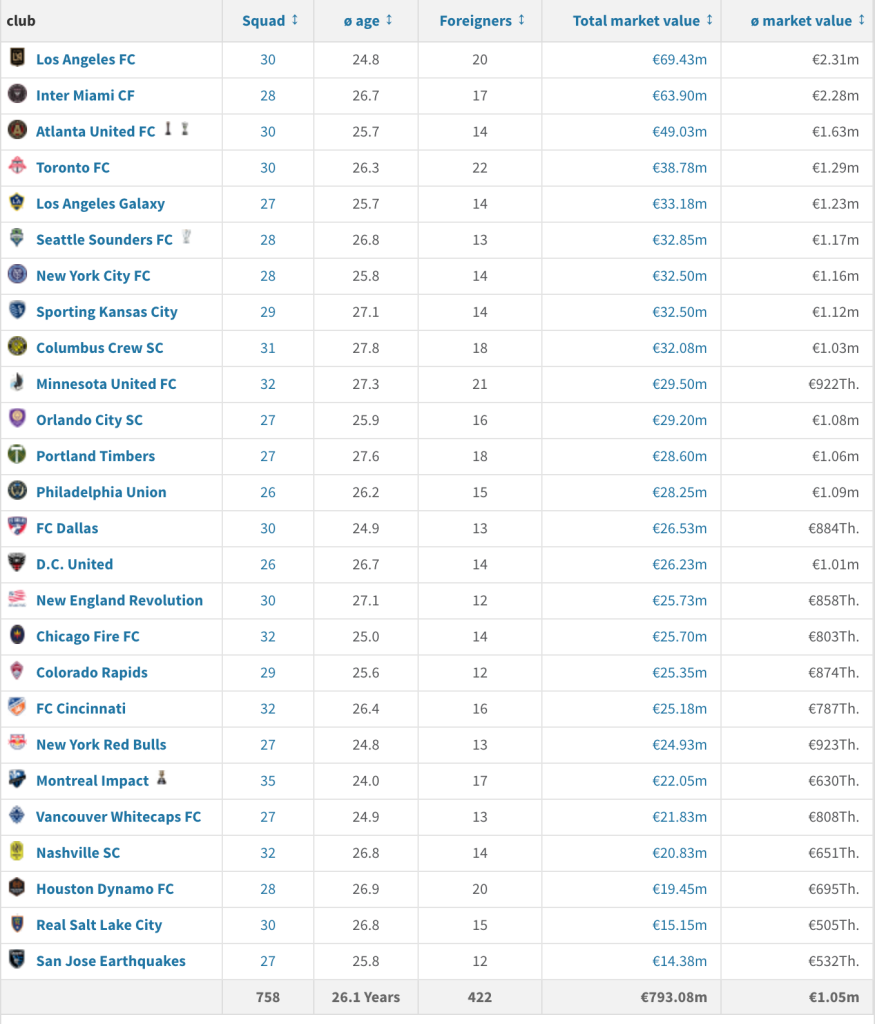
“Eventually, all things merge into one, and a river runs through it.” – Norman Maclean
If we learned anything from the 2020 Concacaf Champions League, its that MLS can be more than competitors with their southern neighbors. With the playing field growing more even by the year, its no wonder the rumors for a combined North American Soccer League grow more apparent by the day.
A few weeks back, multiple reports in Mexico reported that an MLS/Liga MX merger may occur in the future. While nothing new, it appears this one has been gathering much more steam, with Liga MX vying to get back into South American competitions both for club and country.
While not much steam has been picked up since, it does bode the question as to what this will mean for soccer as a whole in the region. What will this mean in the shorterm… and longterm… for soccer on a continental scale.
No more Salary Cap
It isn’t a talent disparity that is preventing MLS from competing with Liga MX, it’s the limitation of what they can spend. For those unaware, MLS runs on a salary cap similar to other American leagues. Each team is granted three designated player spots (as well as Allocation money) that allow teams to spend as much as possible on a few players. This is why the MLS 2.0 model was to give aging European stars one last hurrah in the states.
Liga MX, on the other hand, does not have this salary cap in their league. This causes teams to spend an abundantly more on players, giving them reign over the region.

If the leagues were to merge, one league would have to change their financial rules. With Mexican soccer fans already iffy on this move, keeping it so that unlimited money can be spent will allow the quality of play to stay the same. It will also allow willing MLS owners to open the checkbook, causing more parity for the league.
A way to make the Libertadores/Sudamericana
While beneficial for MLS, there really isn’t much for Mexican soccer to gain with this league. They already tv ratings in the states, and the health of the league’s top teams appear in fine form with the banishment of promotion and relegation.
That is, of course, unless there was a way into the most prestigious tournament in the west.
A move to libertadores and Sudamerica qualification will be the biggest gain for Liga MX with this merger. Liga MX were removed from the competition in 2016, and soccer fans down south have been desperate for a chance back in.
A chance to keep young talents?
In 2014, Jurgen Klinsmann was slammed for saying Americans should be playing less in MLS and more abroad. Four years later, a squad featuring eight CONCACAF players lost 2-1 to Trinidad & Tobago, eliminating them from the 2018 World Cup finals.
Klinsmann’s rightful claim was that the soccer level domestically would tarnish young players development. For better or for worth, many young american talents either stayed in or made the move to Europe.
But will that change with this league? Especially with potential Libertadores qualification, the talent uptick would be massive compared to a regular MLS season.
Take a team like FC Dallas, who’s academy is one of the best in all of MLS. In a typical year, they play MLS clubs with an average market value of $33.5 Million. The lowest valuation being the San Jose Earthquakes ($15.8 million,) and the highest being LAFC ($76.37 million) (All according to Transfermrkt.)

In comparison to english clubs, that would be like playing an average of Preston North End ($35.6 million; 16th in Championship,) with a low of Coventry City ($15.1 Million; 18th in Championship,) and a high of Brentford ($73.8 million; 6th in Championship.) Sorry Alexi Lalas.
For a young up and comer, the premise of a move abroad would mean stiffer competition and more opportunity to be better. It’s why FC Dallas’s own Reggie Cannon made the switch this summer to Portugal.
How would playing Liga MX teams impact this? According to Transfermrkt, the median talent worth is $39.69 million, with six clubs over the $50 evaluation (compared to just two in MLS.)

Sure, the next Weston McKennie or Tyler Adams will always make the big move abroad. But for less potential talents (Duane Holmes, Haji Wright, Sebastian Soto,) it may be just enough to stay in the America’s. Along with potentially no salary cap, it grants clubs enough space to sign more of these players.
It may also be exponentially more popular.
A(n) (entertainment) competitor in the US?
Let’s be clear, a North American soccer league will never outclass Europe in terms of talent. The longevity and history of the leagues will always be triumphant compared to the North America.
But what about putting an entertaining product to garner more eyeballs. In case you don’t know, the most popular soccer league in the country is actually Liga MX.
If a Super League does happen, it may surpass the NHL in the “major league” category as well. With the Liga MX finals consistently beating the Stanley Cup in viewership year after year.
Combining the two top leagues in the continent would not only bring attention to more sports fans, but it may just compete with them as well. In the end, it will take a lot of negotiations and back room meetings to get this rumored league off the ground. But if recent history taught us anything, it’s to expect the unexpected.
